kool bubba ice
Headphoneus Supremus
- Joined
- Jun 16, 2006
- Posts
- 8,547
- Likes
- 88
True.
| Originally Posted by kool bubba ice /img/forum/go_quote.gif If TR/speed can be meaured, why is there any argument about it? |
| Originally Posted by DoomzDayz /img/forum/go_quote.gif DT880 is renowned here for its inconsistent and very extreme opinions on its speed. Many claim DT880 is absurdly slow, while others claim it is very fast. I'm not sure which it is, but its square wave graph looks pretty good on headroom, although its upper midrange is very very polite, where a lot of 'speed' appears to our ears. that said, i've made a couple posts asking about how they compare speed as I have not been able to tell TOO much difference other than upper mid definition between my dt880, stax, and IM716's. I only detect that stax ~ im716 is maybe a bit faster than my dt880's, but both are significantly more defined in the upper mids. |
| The speed of movement on a dynamic diaphragm depends on the power of the magnet, the stiffness of the surround and the weight of the diaphragm and voice-coil. |
| ...no dynamic can ever be as fast and as responsive as an electrostatic... |
| It is rather stupid to have a disargeement about a technical aspect. Not exactly a matter of opinion here - transient response on electrostatic headphones is superior to dynamics. |
| Dynamics cannot even come close to the speed of electrostatics by definition. Some dynamics fake sounding very fast by shoving the treble way forward, but in terms of actual speed, not even the Qualia 010, which is the fastest dynamic around by miles, can compare to electrostats. |
| There is not only how fast it starts, there is also how fast it stops - and no dynamic can ever come close to an electrostatic. |

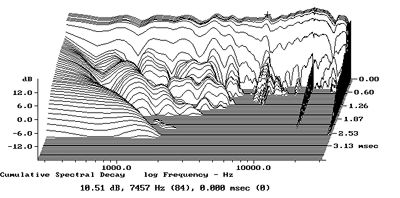


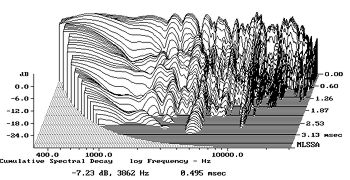
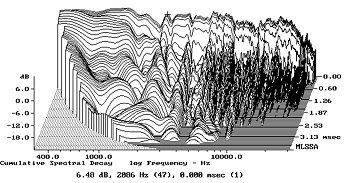
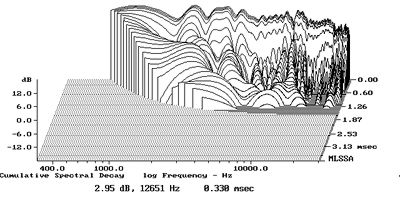

| Originally Posted by jpelg /img/forum/go_quote.gif I consider the the drivers of my Etymotic ER4's pretty darn fast. |
| Originally Posted by catscratch /img/forum/go_quote.gif Balanced armatures also have a good combination of speed and impact, but they fail at treble extension, which hurts their ability to replicate transients. |
| Originally Posted by Trav /img/forum/go_quote.gif Bullseye! |

| Originally Posted by Catharsis /img/forum/go_quote.gif Perhaps I can be of some use here. For several months I have been exclusively listening to the DT880 / Little Dot MKIII combo for most of my electronica collection. As some of you might recall, I felt there was something missing but couldn't put my finger on it. The DT880 seemed really fast when it came to sudden transients, but quite often felt a bit slurred when handling complex passages. One day out of curiosity I plugged my DT880 into my integrated Emu0404 amp and was bowled over. The trade-off was glaringly obvious - reduced soundstage, drier midrange, tighter bass but significantly more clarity and focus during complex passages. While this might not suit everyone's taste, when it came to resolving detail, it was no contest. I have since sold my LDMKIII and picked up a solid state Presonus HP4....yes that's right....an HP4 for half the cost of the LDMKIII. And to all of you who think that the Emu0404 integrated amp is garbage, I urge you to reconsider. While it might not drive headphones to their loudest volumes, the actual sound quality itself was stunning. Perhaps transient response is not the fault of the DT880s, but the equipment that it is partnered with. |
| Originally Posted by Bullseye /img/forum/go_quote.gif Yes? 
No doubt you preferred the SS amp. You were listening to the distortion tubes gave (from the LD MKIII amp), and when those were removed you got to listen how the DT880s sound. The specs of the HP4 are good enough to be compared with any other well built SS amp in the market, and with similar specs. You might want to look at the Samson S·Amp. Just to learn more about tech details. About the drivers we are talking about a subjective opinion here, unless the term "speed" is directly related to something that can be measured. Dynamic and electrostatic are two different types of technologies that involve the use of magnets. Then the response also varies depending on the magnetic properties of the magnets used. Anyways have to do some stuff so will keep reading the thread to see how it goes on. |
| Originally Posted by JaZZ /img/forum/go_quote.gif The dynamic speakers have by far the shorter decay. The few extreme exceptions within their responses (in the form of narrow-band material resonances) border on or are in the ultrasonic range, hence are barely audible. |
| Originally Posted by spritzer /img/forum/go_quote.gif IMO the Martin Logans are a bad example of the ESL breed given the terrible panel design which hasn't progressed in a long time. They also use very thick mylar and the panel doesn't have the support it needs. Measure a new Sound Lab U-1PX and the results should be very different. Sure it is a 30k$ beast but it is one of the few speakers to have a proper frame for the electrostatic panel. |

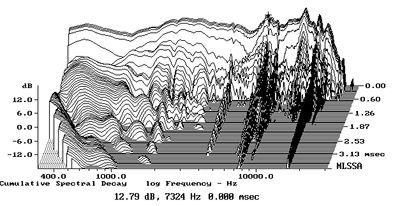
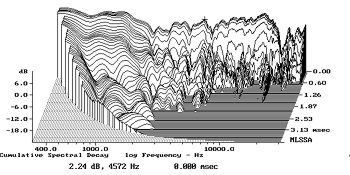

| Originally Posted by DoomzDayz /img/forum/go_quote.gif DT880 is renowned here for its inconsistent and very extreme opinions on its speed. Many claim DT880 is absurdly slow, while others claim it is very fast. I'm not sure which it is, but its square wave graph looks pretty good on headroom, although its upper midrange is very very polite, where a lot of 'speed' appears to our ears. that said, i've made a couple posts asking about how they compare speed as I have not been able to tell TOO much difference other than upper mid definition between my dt880, stax, and IM716's. I only detect that stax ~ im716 is maybe a bit faster than my dt880's, but both are significantly more defined in the upper mids. |
| Originally Posted by Catharsis /img/forum/go_quote.gif Now that I have the SA5000 in my possession, I will say that the DT880 is plenty fast in comparison, though considerably more wet sounding or warm than the SA5000 which might be mistaken for slowness. |
| Originally Posted by JaZZ /img/forum/go_quote.gif So there's no definitively «fastest» headphone, it may (e.g.) just have a fast high-frequency response and a mediocre mid- and low-frequency response compared to a contender. And of course all sound transducers are still far from perfect transient response (e.g. compared to amps). Add to this the obligatory reflections between driver and ear which inevitably will corrupt transients in one or the other way and to a higher or a lesser degree. Open headphones have by far the better preconditions, since they're at least not affected by rear-wave reflections. . |
| Originally Posted by oqvist /img/forum/go_quote.gif Should I take this as that a headphone or speaker can never be too fast in terms of attack and decay? So the faster a headphone is, the more correct it is? |
